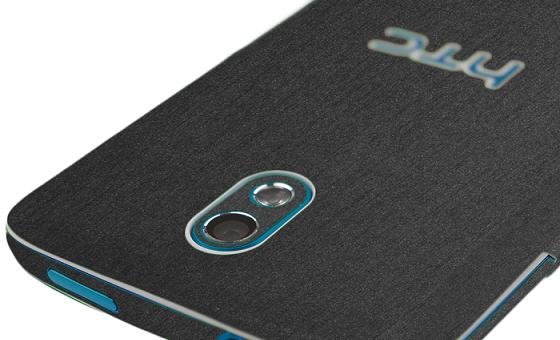Last Updated on May 31, 2019 by Mathew Diekhake
Flashing a custom recovery on your HTC Desire 500 is the first step towards customizing your device. That’s where the actual customization of your device starts. From gaining root-access to installing a custom ROM, all these things require your device to have a custom recovery.
The custom recovery image that you are installing on the HTC Desire 500 smartphone is the TWRP Recovery. Short for Team Win Recovery Project, TWRP is the best custom recovery image anyone can install today and is available for most select Android-based smartphones and tablets. It succeeds the ClockworkMod Recovery that used to be popular but is in no way a match for the TWRP in the present day due to it having all buttons available from the touch screen on the device plus a bevy of new features that no another custom recovery image has. What’s more, TWRP is compatible with the most amount of custom ROMs—and some ROMs even require you to have TWRP installed. TWRP is available for the Desire 500 and here’s how you can install it on your device:

Files You Need
1. Make sure the bootloader on your device is unlocked. If it isn’t, please head over to the official HTCDev website to get your bootloader unlocked. Once it’s done, come back here and continue.
2. This only works on a Windows based computer.
3. Ensure that you have HTC USB drivers installed on your computer.
4. Download Fastboot to your computer. It’ll be used to issue commands to your device.
5. Download Unofficial TWRP Recovery Image to your computer. It’s the recovery that’ll be flashed on your device.
Installing a Custom Recovery on the HTC Desire 500
1. Right-click on Fastboot and select Extract here to extract the actual usable files.
2. On your device, head to Menu->Settings->Developer options and turn on USB debugging.
3. Connect your phone to your computer using a USB cable.
4. Open a command prompt window where Fastboot is located. To do that, hold down Shift and right-click anywhere on your screen and select Open command window here.
5. Type in the following command into the Command Prompt Window:
adb reboot bootloader
6. Your device should reboot into bootloader mode.
7. Select Fastboot using the physical buttons on your device.
8. Now type in the following command into the CMD window and hit Enter. Make sure to replace recovery.img with the actual name of the recovery image that you have downloaded.
fastboot flash recovery recovery.img
9. Wait for it to flash recovery on your device.
10. When it’s done flashing recovery, reboot your device using the following command:
fastboot reboot
11. You’re done!
Your HTC Desire 500 now has a custom recovery!
You can now follow our how to root the HTC Desire 500 tutorial to gain root-access on your device. Alternatively, you can start installing the custom ROMs that are available for the HTC Desire 500 smartphone instead. The custom ROMs don’t need to have root access before they can run if you are installing the directly from the custom recovery image itself.
A custom recovery image often the first thing people install on the device to begin customizing it away from the “stock” version of Android that it is delivered with (out of the box) that typically gets. That includes lots of the smartphone carrier networks and the manufacturers after Android ship it off to them which is the word “stock” needs to have scare quotes around it.
Once you do have the bootloader unlocked (when required) and the custom recovery image installed, you can immediately start installing custom ROMs and custom kernels. The way you do that is by visiting the XDA-Developers web forum and finding the new ROMs or kernels that you wanted to try and then put them on the SD card. Lastly, boot the device into the custom recovery (which is typically done by pressing the same hardware key combination as the stock recovery you had before) and then flashing the file from the Install option that each custom recovery partition has available.
That is all you need to get the kernels, and the ROMs installed on the device if that is what you wanted to do. Many people don’t want only to install ROMs and kernels—they want to install root applications too. For all those people, there is the guide for learning how to root the Android operating system so you can start installing any of the many of thousands of root applications that would not run on the device without the root access.
There is also the option of using the root access to run root apps such as the ROM Manager app. The ROM Manager app is going to help you see what custom ROMs are available, so you don’t need to research them yourself. SO, you need to have root access to run the ROM Manager app since it is a root app, but you can always just install the ROM files manually from the custom recovery yourself without the device rooted. The choice is yours depending on what you prefer.

November 6, 2016 @ 19:36
Unfortunately the Unofficial TWRP Recovery Image is unavailable (Dropbox link gives 404) and it seems impossible to find on the web. Instead, I have installed the PhilZ Touch Recovery 6.59.0 for the all HTC Desire 500 from http://forum.xda-developers.com/desire-500/development/recovery-pilz-touch-recovery-6-59-0-cwm-t3031421 and it seems to work properly. HTC drivers as well as adb and fastboot executables were taken from the HTC Sync Manager installation folder. Thanks for your clear guide.